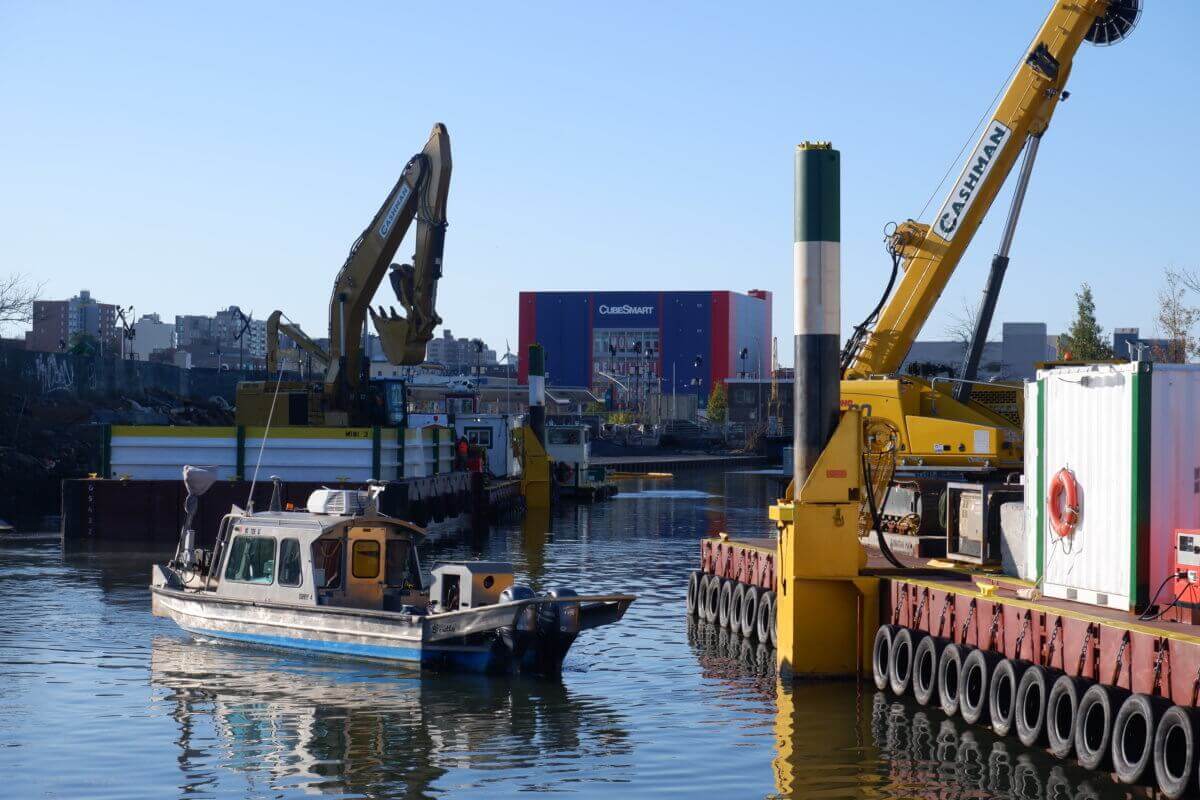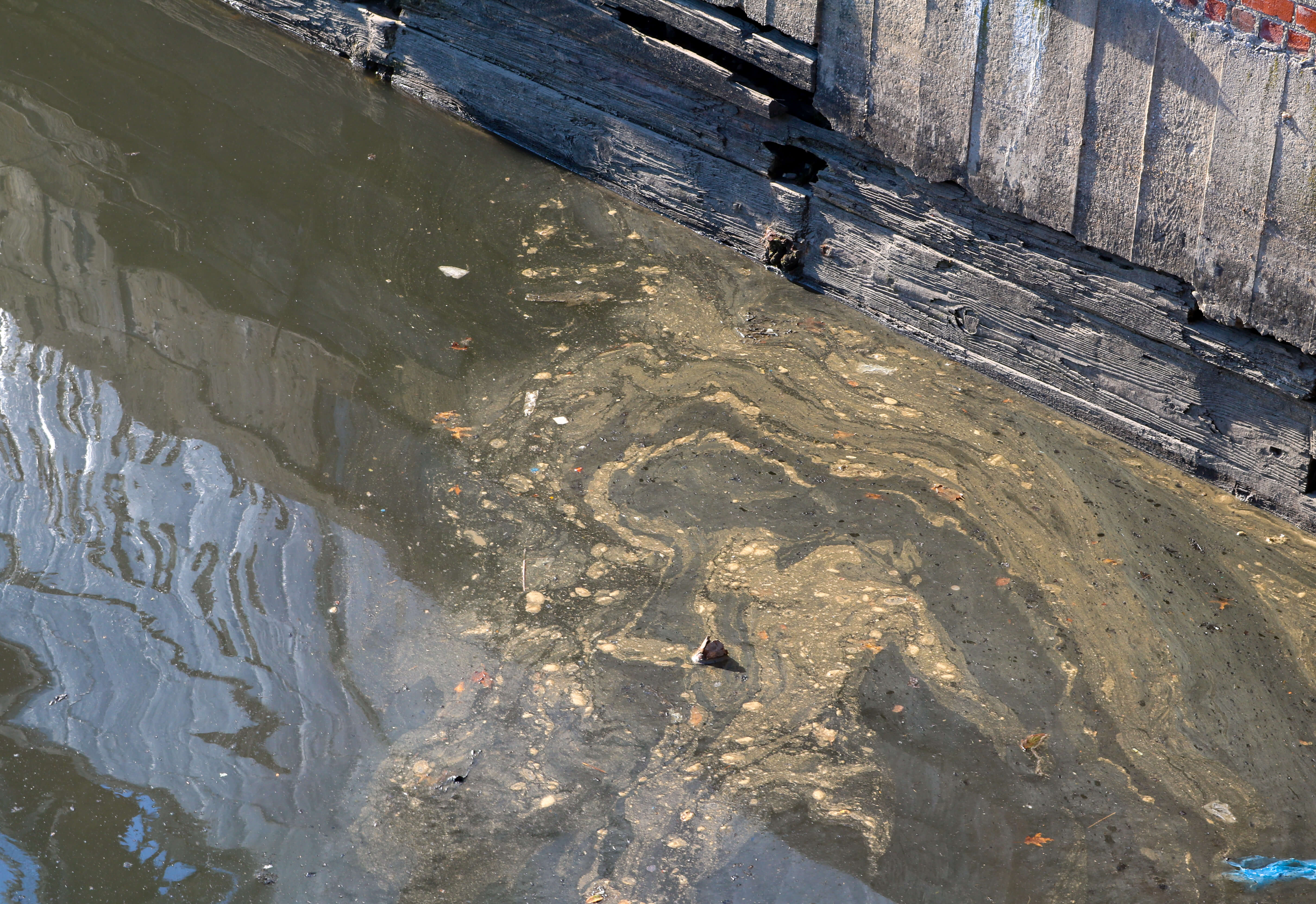Here's What Will Happen During the Gowanus Canal Superfund Cleanup
The federally supervised cleanup of the Gowanus Canal kicked into high gear this week as the Environmental Protection Agency launched their full-scale dredging of the upper portion of the toxic waterway on Monday.

Photo by Susan De Vries
The federally supervised cleanup of the Gowanus Canal kicked into high gear this week as the Environmental Protection Agency launched their full-scale dredging of the upper portion of the toxic waterway on Monday.
The agency has tasked six historic polluters of the Gowanus — National Grid, Con Edison, the Hess Corporation, Honeywell International, the Brooklyn Improvement Company, and the City of New York — with the more than $1.5 billion cleanup effort, which will cleanse the 1.8-mile-long canal in three phases, starting with the stretch north of the 3rd Street Bridge that will wrap up in mid-2023 and cost $125 million.
Barge-mounted excavators will scoop out 72,400 cubic yards of the putrid, poisonous sediment at the bottom of the canal known locally as “black mayonnaise” — a volume of gunk that could fill roughly 22 Olympic size swimming pools!

Dredging will start just south of the Carroll Street Bridge, before continuing up to the Union Street Bridge, and then further south to the 3rd Street Bridge.
Barges small enough to navigate the narrow canal will bring the piles of filth to a staging site at Huntington and Smith streets, where they will drain out excess water, before transferring it to larger barges for shipping out of the Gowanus and across New York Harbor to New Jersey to be processed.
Once in the Garden State, the slimy sludge will be screened for larger materials like tires and wood, before being recycled for new uses such as landfill cover, according to the EPA.
After dredging the gunk from the waterway, contractors will inject the canal bed with cement to solidify and stabilize the native sediment, before installing a multi-layer cap to catch remaining contaminants from percolating back into the water.

The EPA also plans to restore the 1st Street Turning Basin, a defunct and filled-in offshoot of the canal that the agency wants to revitalize as a wetland area.
During the work, there will be frequent openings of the Union Street, Carroll Street, 3rd Street, and 9th Street bridges to allow the barges through, and parties involved will coordinate traffic with the city’s Department of Transportation.
Huntington Street east of Smith Street will be closed through September 2021, and additional closures are possible depending on the work progress, according to EPA. There will also be restrictions on recreational boating and canoeing north of the 9th Street Bridge.
Monitors will regularly survey air quality, noise, vibration, movement and water quality during the cleanup, and readings will be posted online at www.gowanussuperfund.com.
EPA has established a community hotline open 24/7, and during work hours complaints and concerns will be relayed to an on-site supervisor and EPA. The number is (718) 403–2451.
Editor’s note: A version of this story originally ran in Brooklyn Paper. Click here to see the original story.
Related Stories
- EPA Begins Long-Awaited Cleaning of Toxic Gowanus Canal
- What Exactly Is the Black Mayonnaise at the Bottom of the Gowanus Canal?
- EPA Concerned About How Gowanus Rezoning Could Negatively Affect Canal Cleanup
Sign up for amNY’s COVID-19 newsletter to stay up to date on the latest coronavirus news throughout New York City. Email tips@brownstoner.com with further comments, questions or tips. Follow Brownstoner on Twitter and Instagram, and like us on Facebook.





What's Your Take? Leave a Comment